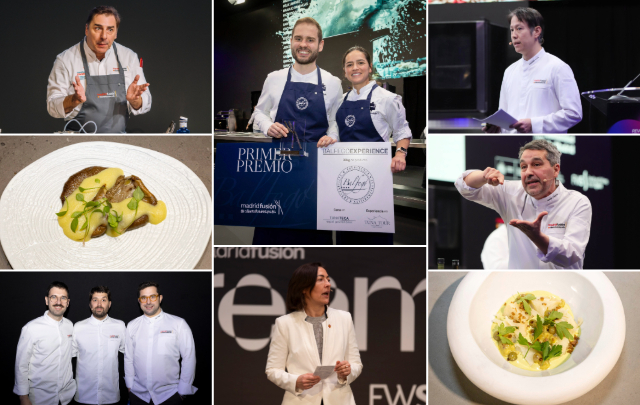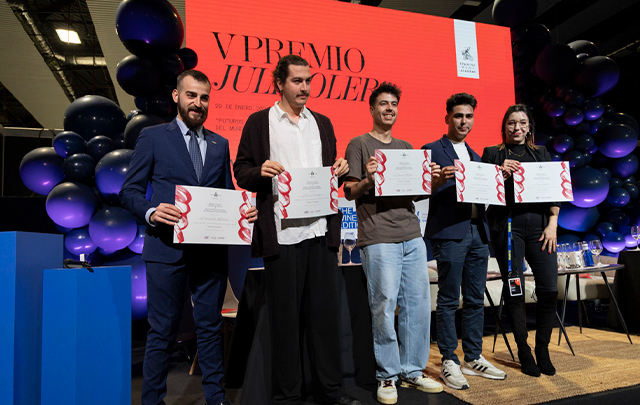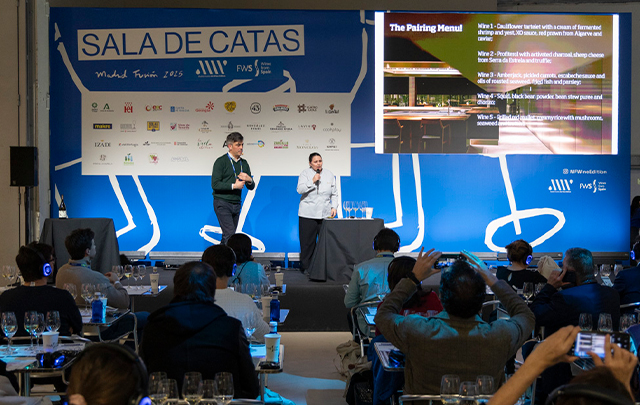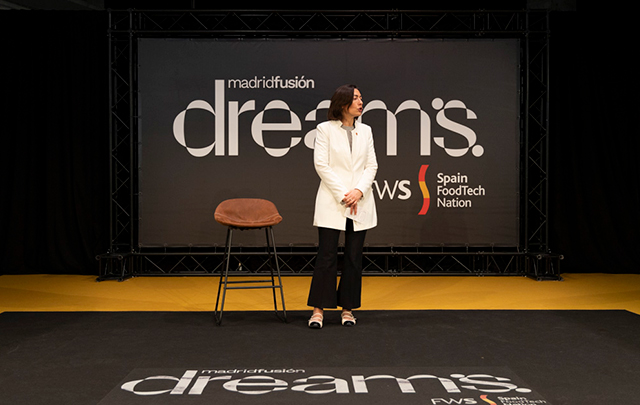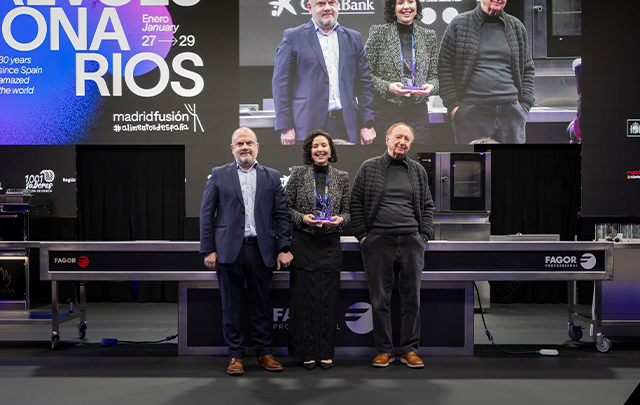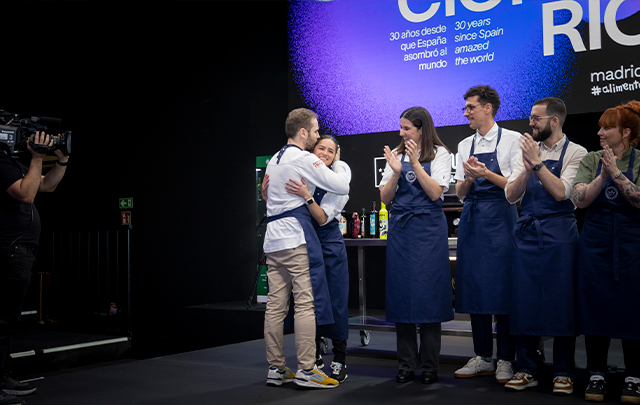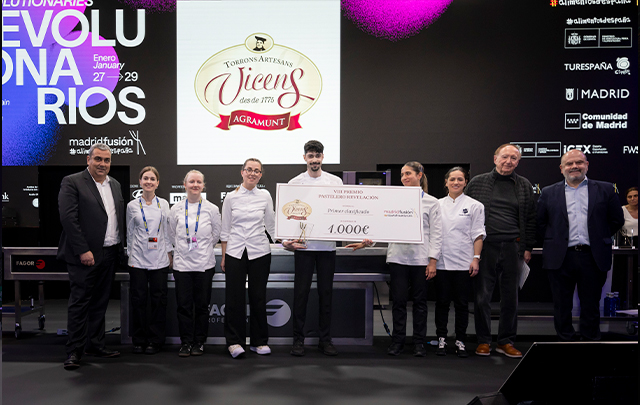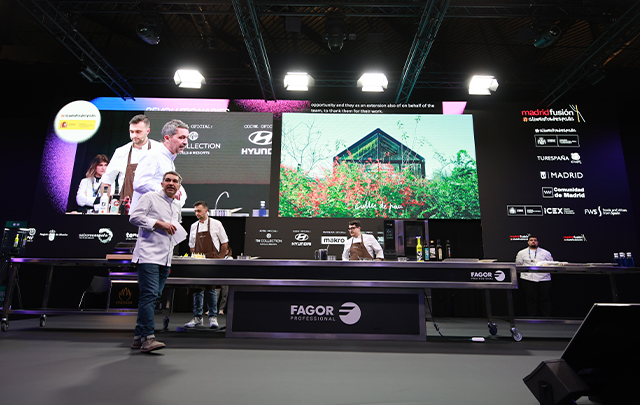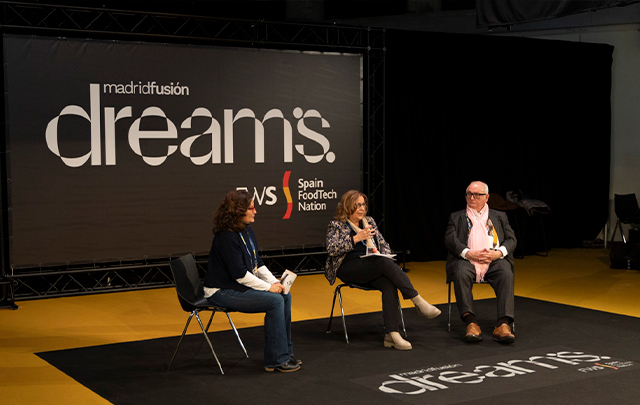News
Vegetable charcuterie, a taste distraction
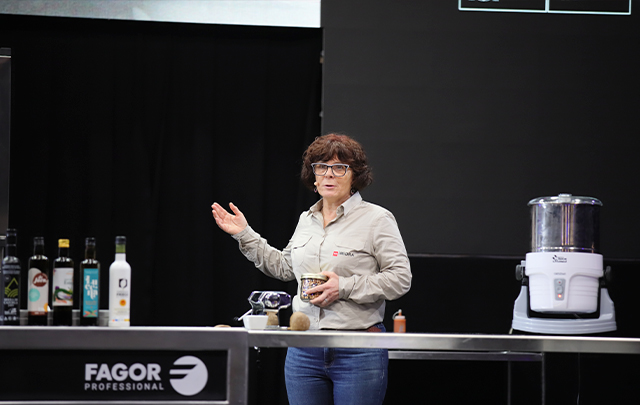
Marco Antonio Iniesta, chef at Frases* (Murcia), goes for vegetables and turns them into charcuterie that is every bit as good as meat
To talk about the Region of Murcia is to talk about its vegetable patches and its sausages. Marco Antonio Iniesta demonstrated the use of vegetable fats as a stable structure for any vegetable-based sausage. On paper it seems simple, but Iniesta looked for the most difficult part, thinking about how to present it at the table. "In addition to developing the sausage, we had to give it that extra touch to make it stand out on the tasting menu." We make it in a way that is more fun with different textures. We go from creamy to crunchy," he revealed at Madrid Fusion.
In this quest for vegetable-based charcuterie, he placed great importance on the choice of ingredients, until he discovered "which type of vegetable would be suitable for a particular marinade or spice," with the added difficulty that the vegetable has no fat and required the search for "a vegetable-based fat or coagulant" to make the sausage.
The chef of Frases presented on stage three of the vegetable sausage proposals that will be the protagonists of his tasting menu next season. His first proposal was the eggplnat blood sausage, based on the Murcian summer blood sausage and replacing the animal part with eggplant. "We chop onion and eggplant and cook it for 4 or 5 hours until it becomes a paste that has all the flavors of meat but is totally vegetable," he said. As a fat, he uses sunflower lecithin "because it is a coagulant that compacts the onion and eggplant more, so that when it is stuffed, it has consistency but the right honeyed or unctuous texture," he added. True to his cuisine, Iniesta is not satisfied with the product as it is and presents it with a choux pastry to which he has added butter and this black pudding paste to make "a kind of sandwich, as if it were a mousse or a chocolate truffle but made with eggplant black pudding".
His second suggestion for a vegetable sausage was to salt the vegetables so that the whole top part is dehydrated, but "we speed up the fermentation processes". This paste is then placed in a cheesecloth and coated with deodorized coconut, "which acts as fat," and then sliced as if it were meat. Iniesta presents it by making a rose with the beetroot sausage with a spring onion pickle on a tartlet. "And to finish, we present it to the customer on a jar to make the complete set".
Tomatoes could not be left out of this range of vegetarian sausages. "At Frases we are very attached to tomatoes and we are big fans of tomatoes in all seasons," he confessed, before explaining how the tomato sobrasada is made. We take the tomato and emulsify it to make tomato cream to which we add all the ingredients of the traditional sobrasada," he began. In this case, the fat they use is kuzu, which allows this "emulsified cream to have the texture of a spreadable sobrasada. And to present it, a Lorca-style crepe is used to wrap the filling of this tomato sobrasada "until you get an autumn leaf that is sifted over the top with paprika to make it look like a leaf you find in the forest". Three vegetable sausages that are just as good as the meat ones.
Chickpeas from Madrid: the challenge of diversity
The chickpea is one of the poor brothers of Spanish gastronomy, despite being one of the staple foods of the future and a humble but versatile product. The Madrid Institute for Rural, Agricultural and Food Research and Development (IMIDRA) has set out to give this legume its rightful place through new techniques for growing chickpea mixtures, highlighting the beneficial effects of legumes on soil health and their influence on ecosystem and food sustainability. This group of researchers, Remedios Alarcón, Luis Isac, Jorge Reay and Daniel Martínez, have taken on the challenge of growing chickpeas to increase their profitability and yield in the kitchen. They have given value to a food intimately related to gastronomy that has nothing to envy those known as Reay Daniel Martínez, had the challenge of growing chickpeas to increase their profitability and their culinary performance. They have given value to a food intimately related to gastronomy that has nothing to envy those known as superfoods. "It is a source of fiber, carbohydrates and micronutrients. These bioactive compounds are found where the chickpea has the most color," Daniel Martínez points out. "We have obtained 9 varieties of chickpeas through cultivation strategies based on their diversity and by establishing crosses through sowing mixed varieties. These crosses are complementary," said Remedios Alarcón.
With the work carried out at IMIDRA, they wanted to give chickpeas a more prominent role in our diet, so that they are not only important in stews. "We wanted to take it out of its comfort zone until we came up with options that had not been considered before, such as drinking it, using it in sweets or in snacks," she explained. So they developed IMIDRA's patented chickpea crisp, which is achieved after a process of controlled cooking and another process of controlled dehydration. "It becomes crispier and less hard and has a lot of potential in the mouth," he said. It can't be cooked in just any way, but it can be cooked without soaking, with distilled water and without salt, because we need to open up the chickpea and make it easier to cook so that it breaks during dehydration," he explained.
But this development has allowed chickpeas to be included in sweets, such as cereals with chickpea mix, even "rocks, energy bars, chocolate with crispy chickpeas, or chickpea toffee". Butter with pistachios and chickpeas has also been made into spreads and creams, or tempeh by fermentation, which is nutritionally wonderful and one of the few foods that produces vitamin B12. Speaking of chickpeas, their flours can be used to make sweets, such as regañá (a kind of fritter), or even to take advantage of the techno-culinary properties of the cooking water, or aquafaba, to make a foam. But perhaps the most striking thing is to obtain "dairy products" from chickpea flour. "We have created analogues to yogurt or an analog of what would be cheese," concludes the researcher.
The art of vinegar
Using the vegetable smoothie technique, Juanlu and the team from Lú Cocina y Alma* (Jerez de la Frontera, Spain) presented different types of vinegar that they make for their dishes with the mother of sherry vinegar, called "angel" in the region. In this search for new vinegar flavors, he created "tomato, carrot or cumin vinegar" to accompany dishes, appetizers or even sauces such as choron.
He also showed how to make vinegar from a good amontillado wine, over 30 years old, to add spectacular flavor to recipes, and wanted to open a debate: "By tradition or by law, vinegar is made from wines that have gone bad or wines that don't measure up to wine, but is it a crime to make it from a good wine?". Juanlu is clear: "It depends on the person or the purpose for which the product is used" because, according to the Lu chef, "you are not spoiling a wine, you are improving a dish".

